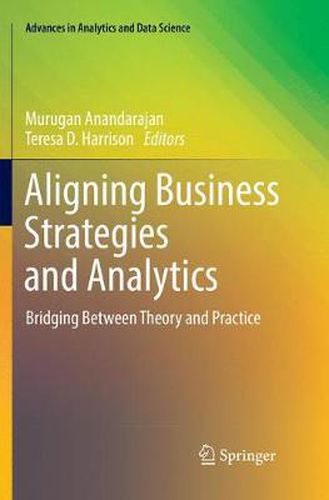Readings Newsletter
Become a Readings Member to make your shopping experience even easier.
Sign in or sign up for free!
You’re not far away from qualifying for FREE standard shipping within Australia
You’ve qualified for FREE standard shipping within Australia
The cart is loading…






This title is printed to order. This book may have been self-published. If so, we cannot guarantee the quality of the content. In the main most books will have gone through the editing process however some may not. We therefore suggest that you be aware of this before ordering this book. If in doubt check either the author or publisher’s details as we are unable to accept any returns unless they are faulty. Please contact us if you have any questions.
This book examines issues related to the alignment of business strategies and analytics. Vast amounts of data are being generated, collected, stored, processed, analyzed, distributed and used at an ever-increasing rate by organizations. Simultaneously, managers must rapidly and thoroughly understand the factors driving their business. Business Analytics is an interactive process of analyzing and exploring enterprise data to find valuable insights that can be exploited for competitive advantage. However, to gain this advantage, organizations need to create a sophisticated analytical climate within which strategic decisions are made. As a result, there is a growing awareness that alignment among business strategies, business structures, and analytics are critical to effectively develop and deploy techniques to enhance an organization’s decision-making capability. In the past, the relevance and usefulness of academic research in the area of alignment is often questioned by practitioners, but this book seeks to bridge this gap.
Aligning Business Strategies and Analytics: Bridging Between Theory and Practice is comprised of twelve chapters, divided into three sections. The book begins by introducing business analytics and the current gap between academic training and the needs within the business community. Chapters 2 - 5 examines how the use of cognitive computing improves financial advice, how technology is accelerating the growth of the financial advising industry, explores the application of advanced analytics to various facets of the industry and provides the context for analytics in practice. Chapters 6 - 9 offers real-world examples of how project management professionals tackle big-data challenges, explores the application of agile methodologies, discusses the operational benefits that can be gained by implementing real-time, and a case study on human capital analytics. Chapters 10 - 11 reviews the opportunities and potential shortfall and highlights how new media marketing and analytics fostered new insights. Finally the book concludes with a look at how data and analytics are playing a revolutionary role in strategy development in the chemical industry.
$9.00 standard shipping within Australia
FREE standard shipping within Australia for orders over $100.00
Express & International shipping calculated at checkout
This title is printed to order. This book may have been self-published. If so, we cannot guarantee the quality of the content. In the main most books will have gone through the editing process however some may not. We therefore suggest that you be aware of this before ordering this book. If in doubt check either the author or publisher’s details as we are unable to accept any returns unless they are faulty. Please contact us if you have any questions.
This book examines issues related to the alignment of business strategies and analytics. Vast amounts of data are being generated, collected, stored, processed, analyzed, distributed and used at an ever-increasing rate by organizations. Simultaneously, managers must rapidly and thoroughly understand the factors driving their business. Business Analytics is an interactive process of analyzing and exploring enterprise data to find valuable insights that can be exploited for competitive advantage. However, to gain this advantage, organizations need to create a sophisticated analytical climate within which strategic decisions are made. As a result, there is a growing awareness that alignment among business strategies, business structures, and analytics are critical to effectively develop and deploy techniques to enhance an organization’s decision-making capability. In the past, the relevance and usefulness of academic research in the area of alignment is often questioned by practitioners, but this book seeks to bridge this gap.
Aligning Business Strategies and Analytics: Bridging Between Theory and Practice is comprised of twelve chapters, divided into three sections. The book begins by introducing business analytics and the current gap between academic training and the needs within the business community. Chapters 2 - 5 examines how the use of cognitive computing improves financial advice, how technology is accelerating the growth of the financial advising industry, explores the application of advanced analytics to various facets of the industry and provides the context for analytics in practice. Chapters 6 - 9 offers real-world examples of how project management professionals tackle big-data challenges, explores the application of agile methodologies, discusses the operational benefits that can be gained by implementing real-time, and a case study on human capital analytics. Chapters 10 - 11 reviews the opportunities and potential shortfall and highlights how new media marketing and analytics fostered new insights. Finally the book concludes with a look at how data and analytics are playing a revolutionary role in strategy development in the chemical industry.